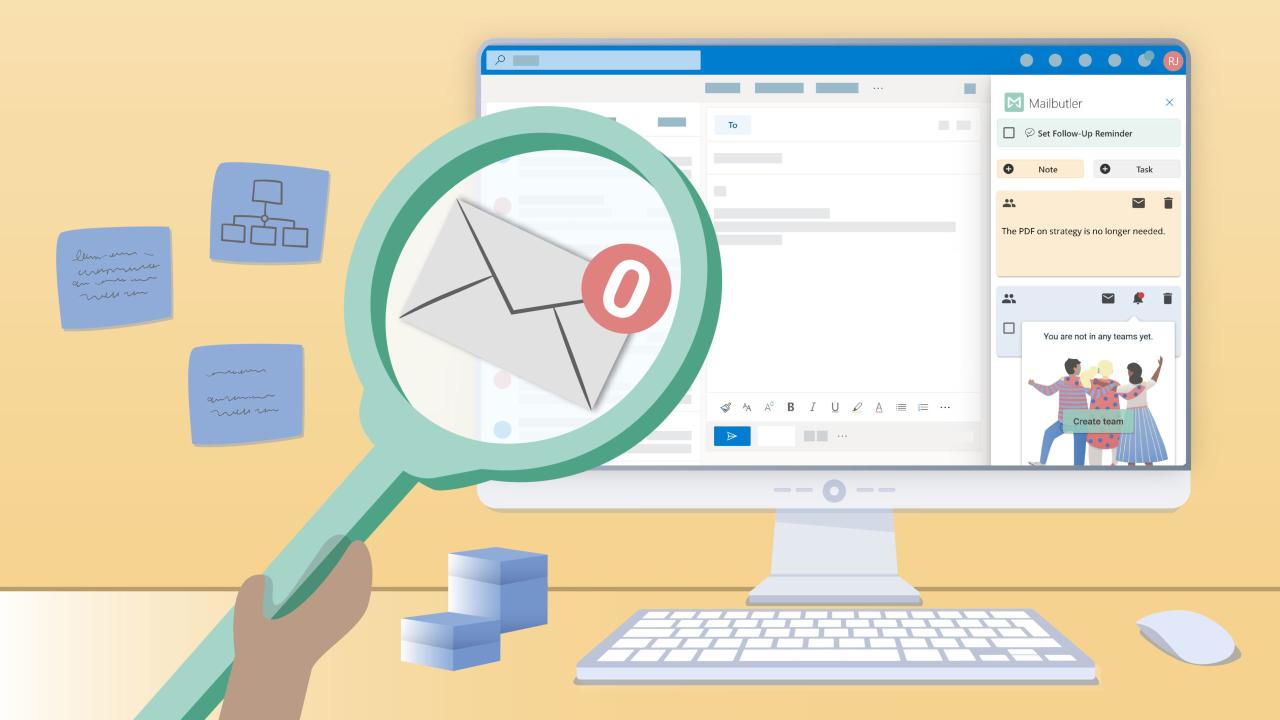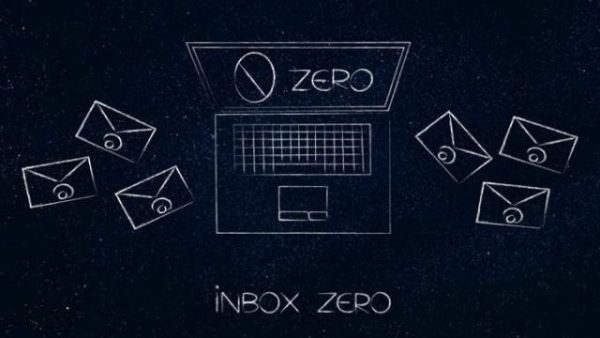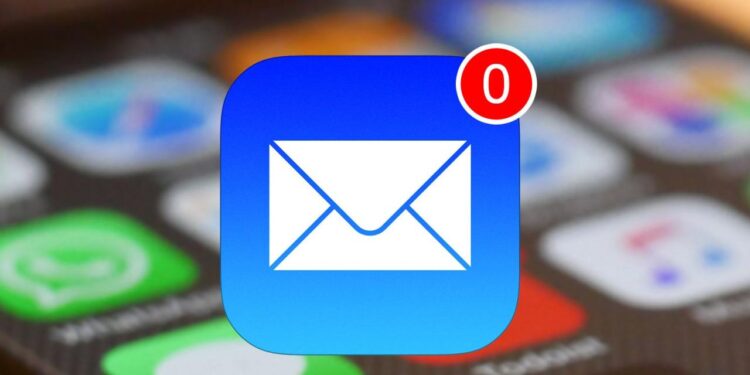In the modern digital age, our inboxes have become the central hub for professional and personal communication. From important work memos and project updates to personal messages and newsletters, a constant stream of emails bombards us daily. This relentless flow can quickly turn our inbox into a chaotic and overwhelming space, leading to increased stress, decreased productivity, and a feeling of being constantly “behind.” However, what if there was a better way? A method to not only manage but master your inbox, achieving a state of complete calm and control?
This is the principle behind Email Zero, or as many call it, Inbox Zero. It’s not just about having an empty inbox; it’s a philosophy and a system for processing all incoming emails efficiently and effectively so that your inbox is almost always empty. This state of emptiness isn’t the goal itself, but rather the result of a streamlined workflow that ensures no email is left unread, unprocessed, or forgotten. By embracing this powerful methodology, you can transform your relationship with email, reduce digital clutter, and reclaim your time and focus for what truly matters.
This comprehensive guide will walk you through the core principles of Inbox Zero, providing actionable strategies, and practical tips to help you achieve and maintain this state of digital serenity. We will explore the mindset shift required, the tools you can use, and the long-term habits that will make your inbox a source of empowerment, not anxiety.
The Foundation of Inbox Zero

Before we dive into the practical steps, it’s crucial to understand that Inbox Zero is more than just a technique; it’s a fundamental change in how you perceive and interact with email. The traditional approach sees the inbox as a to-do list, a repository for all incoming tasks. The Inbox Zero mindset, however, treats the inbox as a temporary processing station, a transit point for messages that need to be dealt with and then moved on.
The core principles of this mental shift are:
A. The Inbox Is Not a Storage Space
Many people use their inbox as an archive, keeping emails for future reference. This leads to thousands of unread messages, making it impossible to find what you need and creating a sense of constant overwhelm. A clean inbox forces you to make decisions and organize your messages into a more logical and searchable system, like an organized folder structure or an advanced search and tagging system.
B. Every Email Requires a Decision
When an email arrives, don’t just read it and leave it there. Instead, adopt a mantra: “handle it once.” This means you must make a decision about that email immediately. The decision is not “I’ll deal with this later,” but one of the following five actions: delete, archive, respond, defer, or delegate. This forces you to be proactive and prevents the accumulation of digital debt.
C. Batch Processing Is Your Friend
Continuously checking your email is a major productivity killer. It breaks your focus and trains your brain to be reactive rather than proactive. The Inbox Zero methodology advocates for batch processing. This means setting specific times during your day to check and process your email. For most people, three times a day is sufficient: once in the morning, once after lunch, and once before you finish work.
The Five-Step Inbox Zero Workflow
Once you have the right mindset, you can implement the practical workflow. The goal is to move every email out of your inbox as quickly and decisively as possible. Here is a detailed breakdown of the five-step process:
A. Delete It
This is the easiest and most powerful step. If an email is junk, spam, or something you will never need again, delete it immediately. Unsubscribe from newsletters you no longer read. Be ruthless. A clean slate is a powerful tool for clarity.
B. Archive It
Archiving is for emails you might need for future reference but don’t require any action. Think of it as a digital filing cabinet. Most modern email clients like Gmail and Outlook have a robust archive function that removes the email from your main inbox view but keeps it easily searchable. Archiving keeps your inbox tidy without the fear of losing important information.
C. Respond Immediately
If an email can be answered in less than two minutes, do it now. This is a critical rule. The time it takes to mark an email as unread and come back to it later is often longer than the time it would take to send a quick, concise reply. By handling these small tasks immediately, you prevent them from becoming mental clutter.
D. Defer It
For emails that require more than a few minutes of work, the answer is to defer them. This means you move them out of your inbox and into a separate system for later action. The key is to get them out of sight. You can use your email client’s built-in “snooze” feature, or move the email to a dedicated “To-Do” folder. For more complex tasks, you should create a task in your project management system (like Asana, Trello, or Todoist) and then archive the email.
E. Delegate It
If an email is a task for someone else, delegate it. Forward the email, add your instructions, and then get it out of your inbox. The key here is to clearly hand off the responsibility. Once it’s been forwarded, you should archive the original email, assuming the other person will now take ownership. If you need to follow up, you can make a separate note for yourself.
Advanced Strategies and Tools for Long-Term Success

Achieving Inbox Zero once is a great start, but the real challenge is maintaining it. Here are some advanced strategies and tools to help you stay on top of your email game for the long haul.
A. Create an Effective Folder System
While the archive is your primary tool, a few specific folders can be incredibly helpful for managing complex workflows. Consider creating folders for:
- Action: For all emails that require a specific action and haven’t been completed.
- Waiting: For emails that are waiting for a response from someone else.
- Reference: For important documents, receipts, or information that you might need to access quickly.
The goal is to keep this system simple and easy to use. Too many folders can be just as confusing as a cluttered inbox.
B. Leverage Email Rules and Filters
Automate the process of email management by creating rules and filters. For example, you can set up a filter to:
- Automatically move emails from a specific sender (like a weekly report) to a designated folder.
- Mark all emails from certain senders as read and archive them immediately (like newsletters you want to read later).
- Label incoming emails with specific tags to make them easier to find later on.
C. Use a Dedicated Task Management System
For tasks that come from email, don’t just leave them in your inbox. Use a dedicated task manager. Services like Todoist, Asana, or ClickUp integrate with your email client, allowing you to turn an email into a task with a single click. This separates your actionable to-do items from your general correspondence and provides a clearer, more organized view of your workload.
D. Schedule Your Email Time
As mentioned earlier, batching is key. Use your calendar to block out specific times for email processing. This helps you avoid the temptation to check your email constantly and allows you to dedicate your full attention to other deep work.
E. Master the Art of the Concise Email
The faster you can respond, the faster you can get back to your real work. Practice writing short, to-the-point emails. Use clear subject lines, bullet points for key information, and a single call to action. This also encourages others to do the same, leading to a more efficient communication loop for everyone involved.
F. Take Advantage of Templates and Canned Responses
If you find yourself writing the same email over and over, save it as a template or canned response. This is a massive time-saver for common queries, project updates, or meeting requests. Most major email clients have this functionality built-in or available through third-party add-ons.
G. Unsubscribe, Unsubscribe, Unsubscribe
Actively manage the flow of email into your inbox. Take the time to unsubscribe from promotional lists, marketing emails, and newsletters you no longer find valuable. The fewer emails you receive, the less you have to process. There are even tools and services, such as Unroll.me, that can help you do this in bulk.
Conclusion
The concept of Inbox Zero, or Email Zero, is not merely about achieving an empty inbox. It’s a powerful and transformative practice that extends far beyond the digital realm. By mastering your email, you are essentially mastering your time, your focus, and your mental well-being. A chaotic inbox is a reflection of a chaotic workflow and a fragmented mindset. Conversely, a clean and controlled inbox is the result of a deliberate, efficient, and proactive approach to your daily tasks.
The journey to an empty inbox is a continuous one. It requires discipline, consistency, and a willingness to change long-standing habits. However, the benefits are immense. You will find yourself with less digital clutter, a clearer mind, and the confidence that you are in full control of your communication. No longer will you feel chained to your inbox, constantly reacting to new messages. Instead, you will be able to dedicate your energy and attention to what truly matters—your work, your relationships, and your personal goals.
By implementing the five-step workflow—Delete, Archive, Respond, Defer, and Delegate—and leveraging advanced strategies like filters and batching, you can transform your relationship with email from a source of stress into a tool for empowerment. It’s an investment in your productivity and a commitment to a more organized and stress-free life. So take a deep breath, and start your journey toward a life with less inbox clutter and more focused work. The path to becoming an Inbox Hero starts now.












